Many situations are occurring in crops over the last week or two. Corn harvest has begun and is progressing well between some rain events.
Cotton Update: A few more fields have reached the silverleaf whitefly (SLWF) threshold this week. This pest is starting to spread out further in the county, so keep an eye out for it, and treat when needed. Click for more information on scouting and managing SLWF. As corn harvest is underway, be aware of stink bugs and other pests moving out of corn and into nearby cotton fields. Aphids and spider mites are still present in many cotton fields, and in some cotton fields spider mites have reached treatable levels.
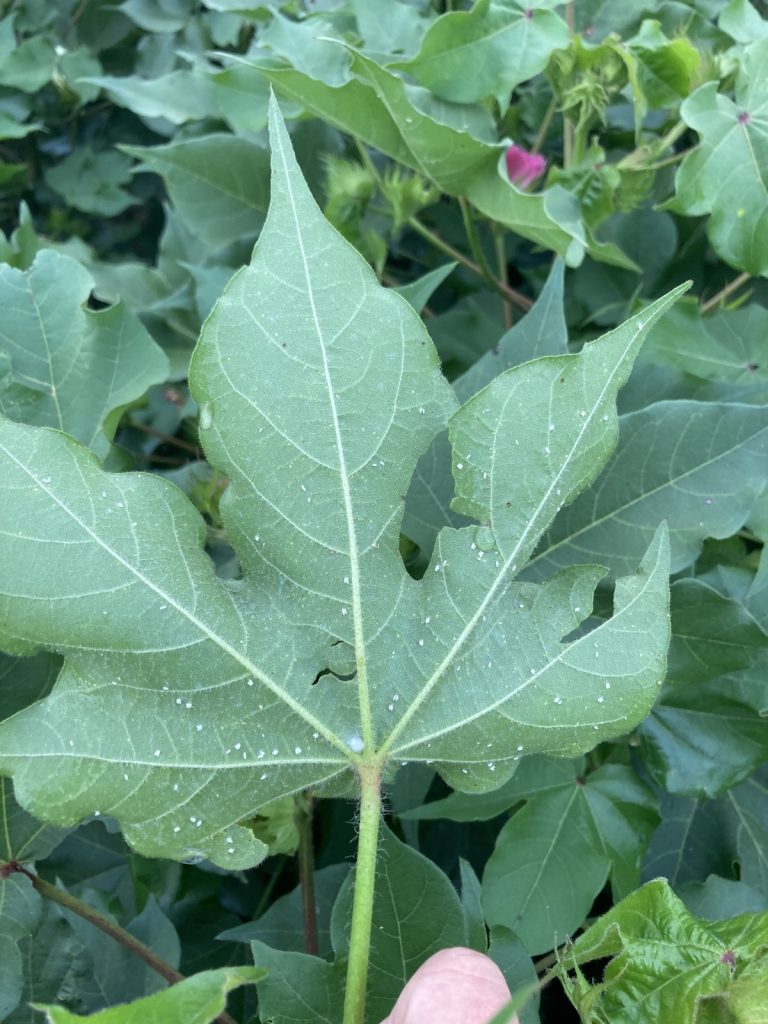

Target spot and areolate mildew are two diseases in cotton that need to be monitored. We are seeing some target spot in fields, and areolate mildew has been reported, also. Target spot begins in the lower canopy of the plant, and moves up the plant. It can cause premature defoliation, and affect yield depending on the stage of the crop. The important time to be scouting for target spot is between 1st and 6th week of bloom, peaking at 3rd week of bloom. Timely fungicide treatments can protect 200+ pounds of potential yield. Areolate mildew can also cause premature defoliation in cotton. At this point in the season Dr. Kemerait says, “My belief is that areolate mildew will continue to increase in severity throughout our southern production region and that a well-timed fungicide application is appropriate IF there is good yield potential AND disease is not well-established in the field AND grower has more than a month to go ahead of defoliation.”
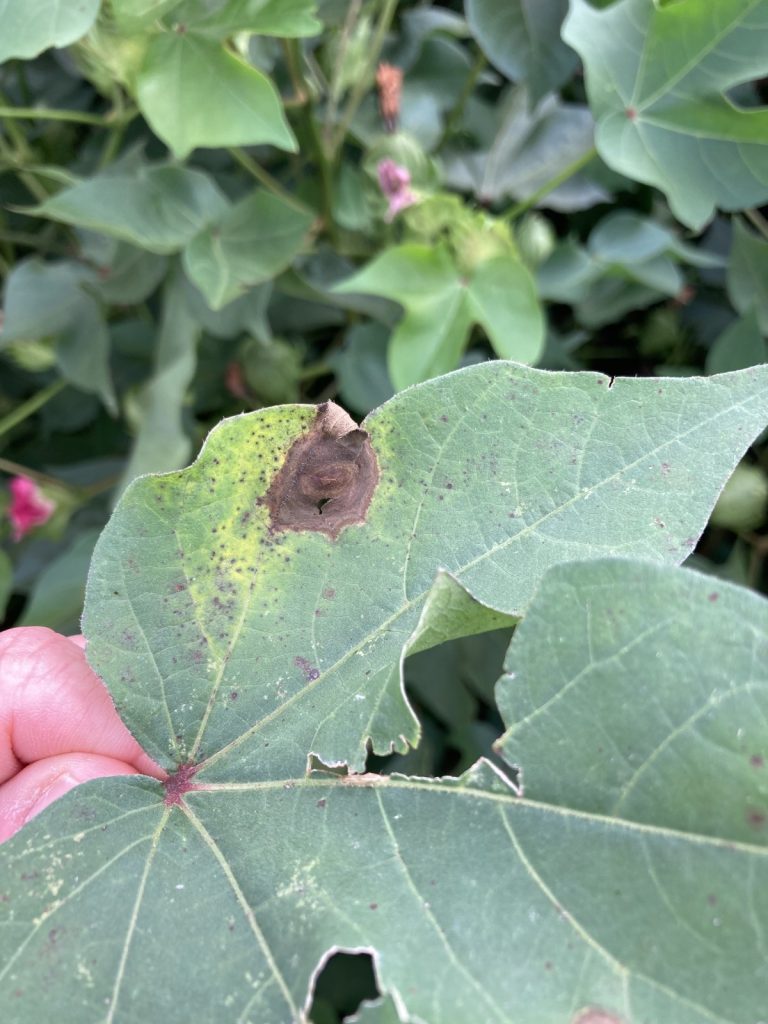


Peanut Update: Tomato Spotted Wilt Virus (TSWV) is very evident in many peanut fields. We are participating in the TSWV survey with Dr. Mark Abney to rate fields in the county and to document the incidence, so we may be contacting you for assistance with fields. We have observed an increase in white mold hits during recent peanut field visits. Many growers are on a strong white mold fungicide spray program, but we can still have white mold when conditions are favorable, even with great products and a timely spray schedule. Another disease observed is Diplodia, which is a secondary pathogen that usually infects plants that are under other stresses. Early and late leaf spot diseases are being reported in south Georgia. Let’s keep a close check on diseases and stay on a good, timely fungicide spray schedule. If you need assistance with disease ID, let us know and will we try to help with that.
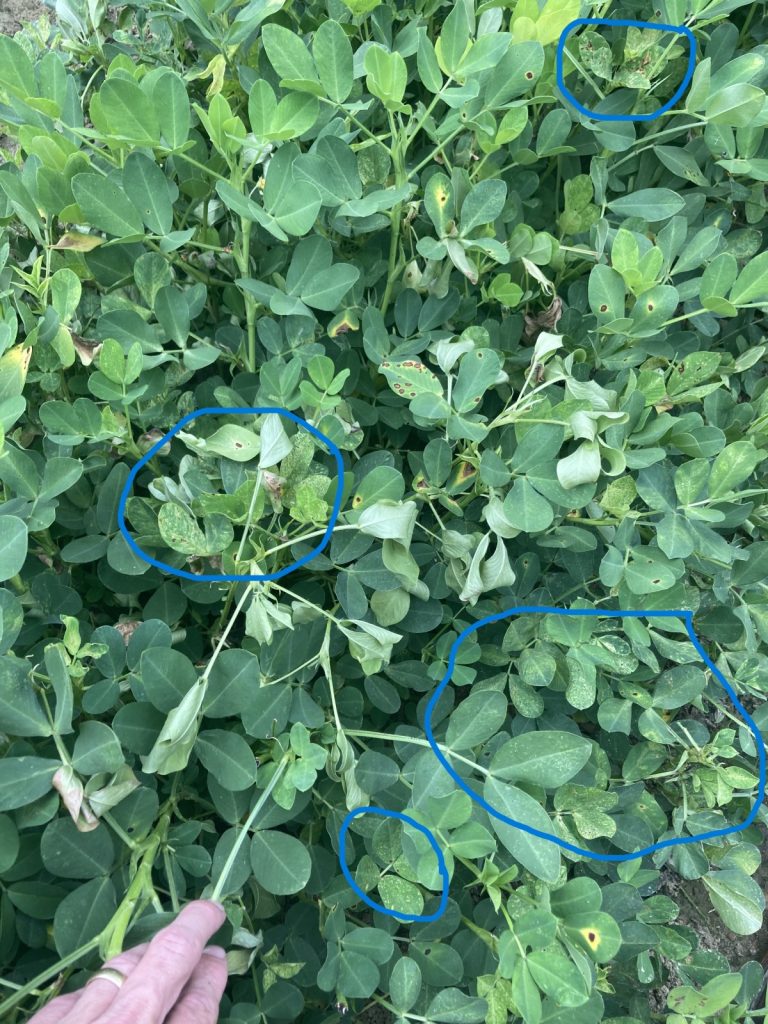

There has been a spike this week in some peanut fields of foliage feeders. The main caterpillar observed is the Velvet Bean Caterpillar (VBC). Other foliage feeders include loopers, armyworms (beet, fall, southern, yellow-striped), corn earworm, and tobacco budworm. The threshold for foliage feeders in peanuts is 4-8 worms per row foot. Fields that have not had any treatment should be scouted for foliage feeders.
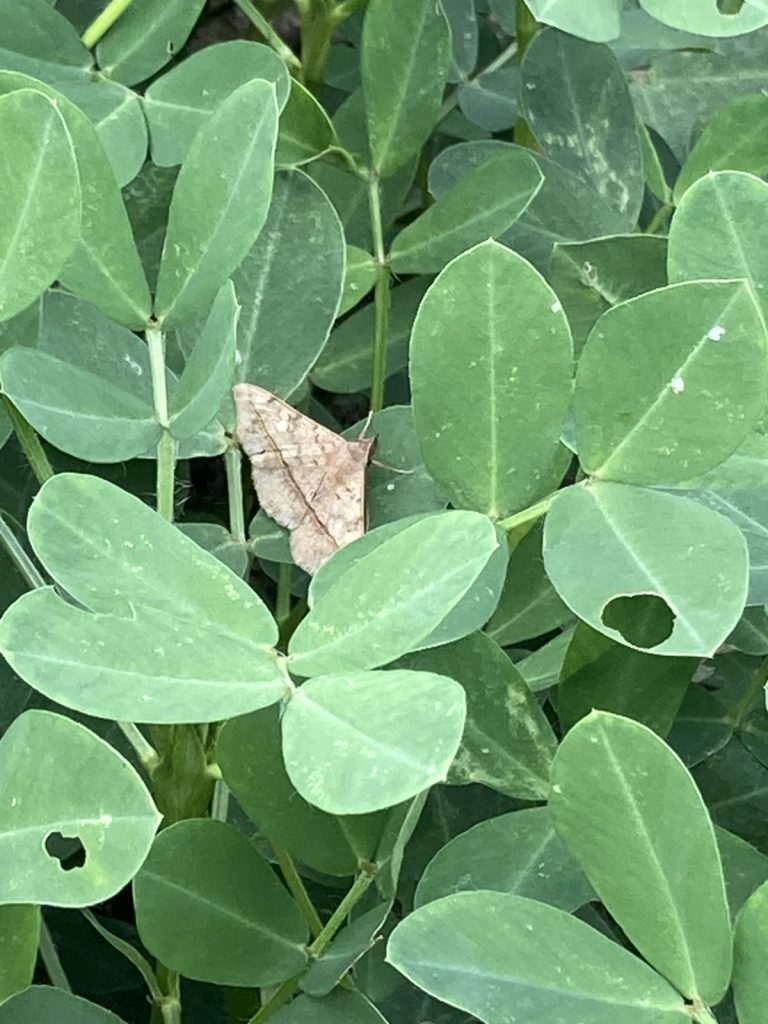

Soybean Update: As in peanuts, soybean growers should be aware of foliage feeders in soybeans. Fields that have been protected may be fine, but keep a check on the caterpillars present and the level of defoliation. Another insect to scout for is silverleaf whitefly (SLWF). They will reproduce in soybeans as a host crop, so if they are observed, we may need to monitor for treatment thresholds. If there are questions about SLWF in soybeans, please let us know.
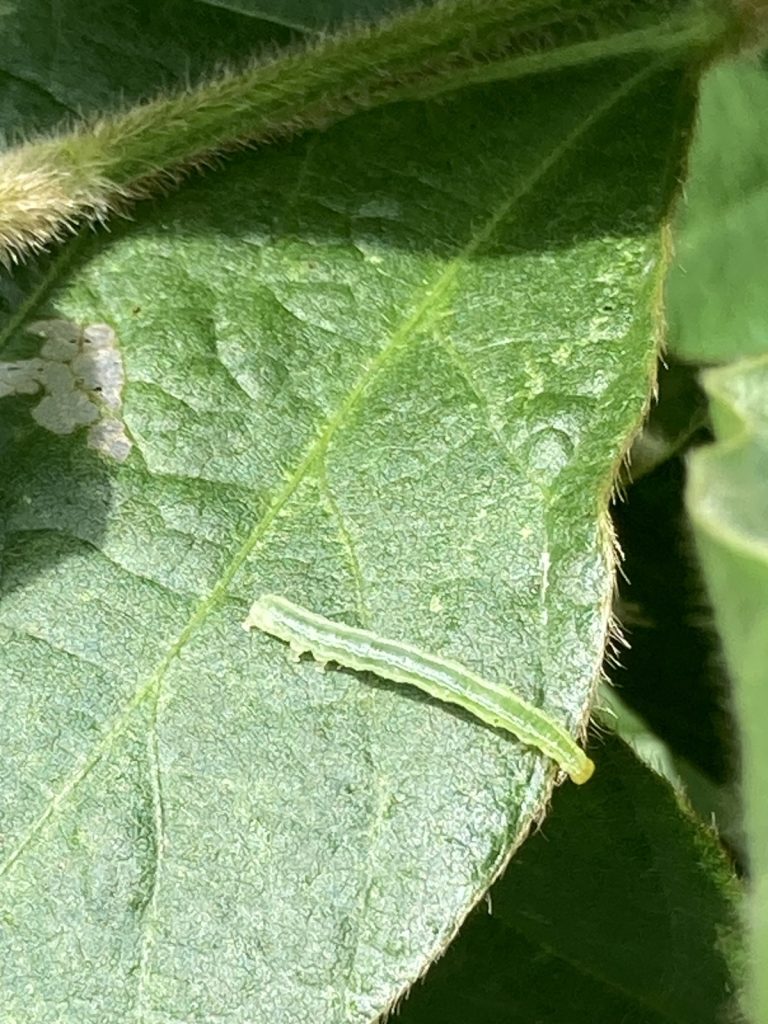

If we can be of assistance to you at Worth County Extension, just let us know.